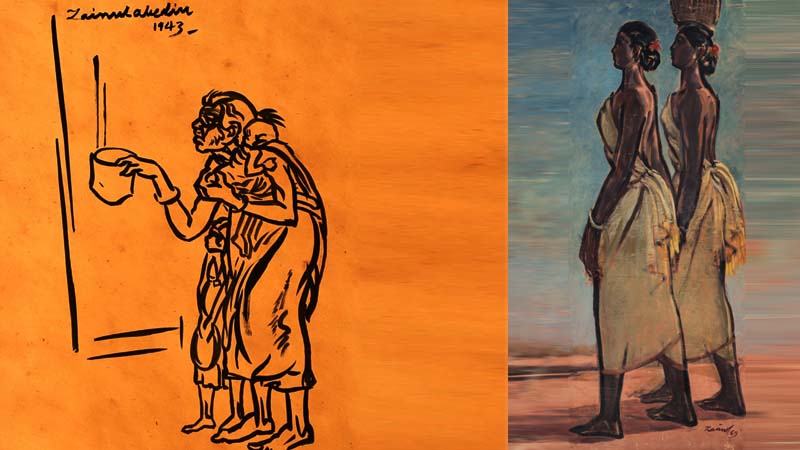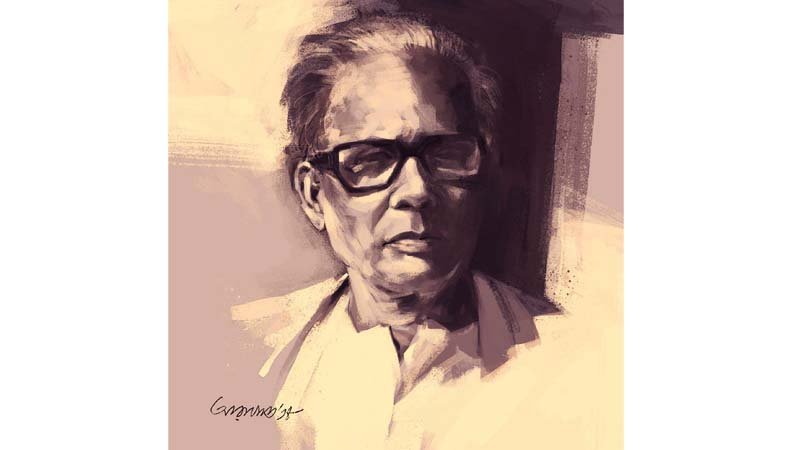43rd Death Anniversary
Homage to Shilpacharya Zainul Abedin

Zainul Abedin was an artist of extraordinary talent and international repute. He played a revolutionary role in the modern art movement in Bangladesh. He is widely acclaimed for his ‘Famine Sketches‘. Through a series, he not only documented the cruel famine of 1943 but also showed its sinister face through the skeletal figures of the people fated to die of hunger in a man-made plight. He depicted these extremely shocking pictures with human compassion. He used to make his own ink by burning charcoal and using cheap ordinary packing paper for sketching. He produced a series of brush and ink drawings, which later became iconic images of human sufferings. For his artistic and visionary qualities, he is affectionately titled ‘Shilpacharya’ (great master of art) in Bangladesh.
Zainul developed the talent for drawing and painting when he was a high school student. After completing high school, he got admitted to the Government School of Art, Calcutta (now Kolkata). He graduated with the first position in first class in 1938. He was appointed teacher of the Art School while he was still a student there. He also attended the Slade School of Arts, London during 1951-52. He was the first Principal of the first art school in the then East Pakistan (now Dhaka).
“My belief never endorses that fine arts
is solely for the sake of fine arts; rather
I believe that it is for shaping and
beautifying life of a human being.”
Many of us don’t know that Zainul designed the pages of the Constitution of Bangladesh. In 1975, he founded the Folk Art Museum at Sonargaon, and also Zainul Abedin Shangrahasala, a gallery of his own works in Mymensingh in 1975. He won numerous awards throughout his lifetime, including the Presidential Award for Pride of Performance from the Government of Pakistan (1958), an honorary degree from the University of Delhi, and an appointment as National Professor of Bangladesh in 1974.
This legendary artist was born in Kishoreganj in 1914. The river Brahmaputra played a vital role in his paintings and was a source of inspiration all through his career. A series of water colours that Zainul did as his tribute to the river earned him the Governor’s Gold Medal in an all-India exhibition in 1938. This award gave him the confidence to create his own visual style.
 Famine sketch, 1943 // Santhal Women, painted in 1969
Famine sketch, 1943 // Santhal Women, painted in 1969
A widely journeyed man, his works have been exhibited in most countries of Asia, Europe and the Americas. Permanent collections where his works are preserved include the National Museum in Brussels, the Cincinatti Museum and the San Fransisco Museum of Arts in the United States.
Abedin developed lung cancer and died in Dhaka in 1976, and the following year, he was posthumously bestowed the Independence Day Award, the highest state award granted by the Bangladeshi
government. Skillful handling of bold strokes, sensitivity to colour and an immense compassion for the struggling and the suffering people combined to make Zainul the master artist, our pride and heritage. In 2009, the International Astronomical Union named an impact crater on the planet Mercury ‘Zabedin,’ after the artist.



